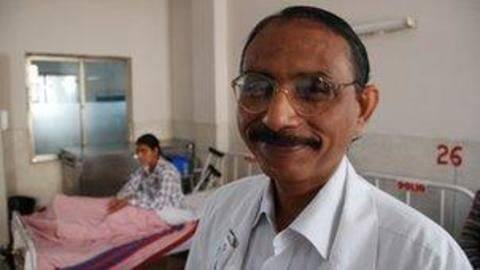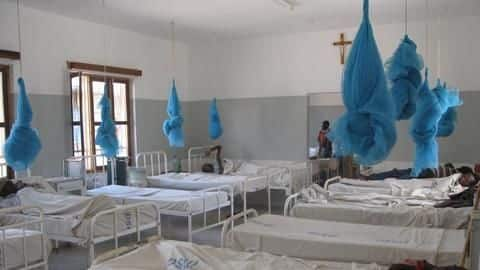POLIO FREE INDIA
As of today, India has gone three years without a single case of wild poliovirus, which means it’s now officially “polio-free.” India’s achievement is one of the most impressive accomplishments in global health, ever.
Five years ago, India was home to nearly half of the world’s new polio cases. At the time, if you asked any health expert, they would have said India would be the last place on earth to end polio. India’s population density and high birth rate (27 million new children are born each year), combined with poor sanitation, was like a petri dish for polio.
But the government of India, with help from the organizations that make up the Global Polio Eradication Initiative including Rotary International launched an all-out effort to stop the disease. The country deployed 2 million vaccinators to reach children who had never before been reached with polio vaccines or any other health services—children who live in flooded regions or hard-to-find rural towns, or are regularly in-transit with their families. One of the most powerful images I’ve seen during my visits to India is that of parents proudly holding vaccination cards showing that their children were protected from deadly diseases for the first time.
And now that these children have been found, health workers can supply them with much more than just polio drops. They can provide other critical health services like measles vaccines, clean water, and information about how to deliver their babies safely and care for them during their first weeks of life.
India’s victory galvanized the global health community to commit to achieving a polio-free world by 2018. Now, we only have 3 more countries to go, down from 125 in 1988. All three countries face unique challenges that make eradication difficult, but India’s success gives the polio program valuable lessons to apply in the remaining countries and confidence that eradication is possible.
India’s success is cause for celebration – but not complacency. We saw last year, in Syria and the Horn of Africa, how this disease can silently spread to places that have not had cases in many years. Two years before, polio popped up in more countries, including China and Tajikistan. These outbreaks are stark reminders that as long as polio exists in the last reservoirs in Northern Nigeria, Pakistan, and Afghanistan, the disease is still a threat everywhere. India showed us what is possible – we can end polio, and protect all children everywhere from this debilitating disease forever. Doing the hard work to make this dream come true is up to us.



PAGE 4 OF 5
During my visit to Delhi, I visited St. Stephen’s Hospital, which operates the only dedicated polio ward in India. The program is led by Dr. Mathew Varghese, who gave us a tour of the ward.

Dr. Matthew Varghese with one of his patients in the cancer ward
Polio frequently paralyzes the lower limbs and most often impacts those with little economic means, leaving them in the humiliating position of being forced to crawl. The kids who grow up crawling end up with permanent deformities. The following video shows one of Dr. Varghese’s patients crawling before treatment.
The following image shows the same patient following susccessful treatment, able to stand and walk with a walker.

Dr. Varghese accepts every patient who comes to him, regardless of ability to pay. Over the last decade, he boasts enthusiastically, that his patients are getting older and older. Virtually all of his patients are now over 15. He performs surgeries that allow children who crawl, to stand and walk in braces or calipers. Some children have had paralysis on only one leg. One outcome is that the affected leg is shorter than the other leg. Dr. Varghese provides surgery to lengthen the leg one millimeter per day. This allows patients to get out of orthopedic shoes and sometimes to eliminate the need for crutches or even a cane.
The ward is financially supported by Rotary.
The History of Rotary’s Fight to End Polio:
One of the highlights of my visit to India, was a meeting with Raja Saboo, who at the age of 80 interrupted his planning for a humanitarian mission to Rwanda, to visit with me.

Raja Saboo, former President of Rotary International
Saboo served as the President of Rotary International in 1991-92; he joined Rotary in 1961. As a young man, he met Mahatma Gandhi and as an adult met Mother Teresa several times. In 1992, he visited South Africa in his official capacity as the President of Rotary International. He was surprised to be invited to meet with President F. W. de Klerk. After a brief introduction, the South African President invited Saboo to stand with him at a press conference where he announced the end to apartheid.
Saboo, who served on the Rotary International Board beginning before the decision to make polio Rotary’s global effort, was able to provide a historical perspective.
Individual Rotary clubs were engaging in the fight against polio by the late 1970s, but this work was all being done at the club level and not at the international level.
Sir Clem Renouf of Australia served as the president of Rotary in 1978 and 1979 was the first to identify polio as a potential large scale project for Rotary. In 1981, Rotary decided approve a proposal to “immunize the children of the world against polio by 2005, when Rotary would be celebrating its 100 years. In 1988, the goal was rephrased as the eradication of polio, a difference that may be viewed as symbolic, but was actually a significant leap. No longer would success be judged by Rotary’s effort, but by the outcome.
When Rotary first estimated the cost of the program, Saboo said, the organization estimated the cost would be $25 million. They quickly realized that the cost would be much higher, estimating that it would be at least $120 million. In 1988, Rotary International raised $240 million to kick off the effort in earnest.
More than $10 billion has been spent to date to end polio with a budget of approximately $5 billion pending for the “Endgame Strategic Plan.”
Saboo played a key role in managing one of the biggest challenges of the immunization campaign. Some people in the Muslim community were especially resistant to efforts to immunize their children. Saboo visited a community where five families were specifically identified who were refusing to have their children vaccinated. During the visit, Saboo noticed a small child crawling on the ground in a classic polio afflicted way. He recognized that the child needed polio corrective surgery. He organized an effort to have this child and other children in the area receive the needed surgeries. This helped to soften the resistance to immunizations.






Dana Shivam Hospital is among the Best Heart Care Hospital in Jaipur. Dana Shivam Heart & Superspeciality Hospital is 100 bedded multispecialty hospital in Jaipur, Rajasthan , which gives you the superspeciality treatment in the best reliable manner and is boosted with great expertise in healthcare by leading clinicians, management team supported by highly trained clinical and non clinical staff.
ReplyDelete